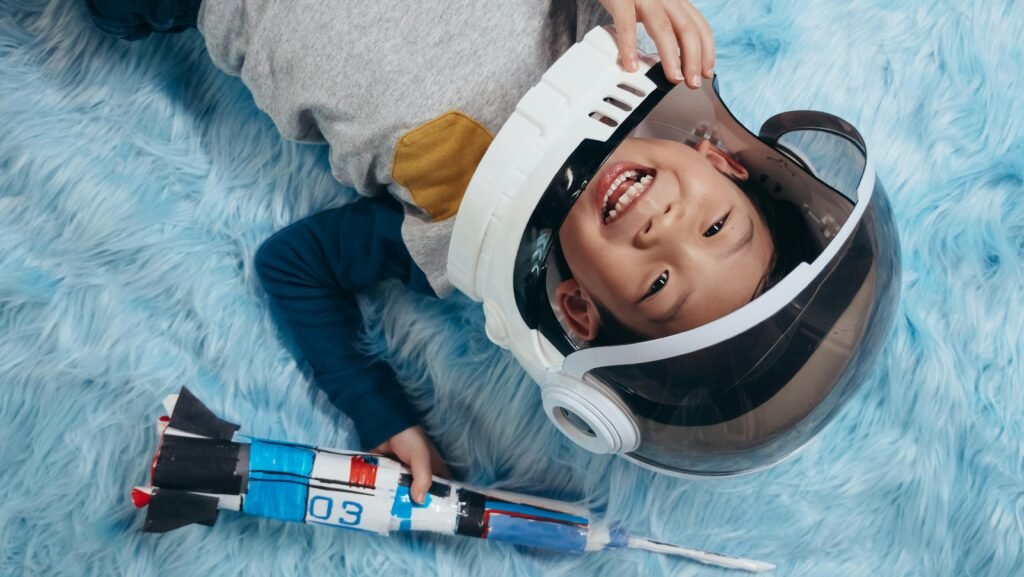Social-Emotional Learning (SEL) refers to the process through which children acquire and apply emotional intelligence skills such as self-awareness, emotional regulation, empathy, responsible decision-making, and relationship-building. While these may sound like soft skills, science tells us they are deeply connected to how the brain develops and functions.
SEL is not just about “being nice” or “calming down.” It is about building the neural pathways that help children thrive in life academically, socially, and emotionally. Grounded in research from neuroscience and psychology, SEL has become a critical component of education and child development worldwide.
In essence, SEL equips children with the tools to understand themselves and others, manage emotions effectively, and make thoughtful choices even when big feelings arise.
The Neuroscience Behind Emotions and Learning
Recent discoveries in neuroscience have reshaped how we understand children’s behavior and learning. One key insight is that emotions and cognition are not separate, they are intimately connected. The brain’s amygdala (emotional center) and the prefrontal cortex (decision-making center) work hand in hand. When children feel safe, connected, and regulated, their brains are more open to learning and problem-solving.
Research highlights include:
- Children who receive SEL instruction show improved academic performance.
- SEL contributes to lower levels of anxiety, depression, and aggression.
- It improves executive functioning, including focus, memory, and impulse control.
- Positive emotional experiences enhance neuroplasticity, the brain’s ability to adapt and grow.
In short, teaching emotions is teaching the brain to work better.
The Role of Environment in Emotional Development
Children don’t learn emotional skills in isolation. Their environment both at home and at school, plays a powerful role in shaping their emotional intelligence.
Parental Modeling
Children learn by observing. When parents name their feelings, validate emotions, and model calm problem-solving, they teach children that emotions are not scary, they are navigable.
Classroom Integration
Schools that integrate SEL into daily routines often report fewer behavioral issues, greater student engagement, and improved peer relationships. Teachers trained in SEL strategies create emotionally safe spaces that promote both learning and connection.
Community and Culture
Cultural values influence how emotions are expressed and perceived. SEL is most effective when it reflects a child’s cultural background and language, this is especially true for bilingual children, who navigate emotional worlds across two linguistic and cultural systems.
Stages of Social-Emotional Growth in Children
Social-emotional learning unfolds in developmental stages, much like language or motor skills:
- Early Childhood (Ages 2–5): Children begin identifying basic emotions and learning simple regulation techniques like breathing or asking for help.
- Middle Childhood (Ages 6–9): Kids start developing empathy, understanding perspectives, and building peer relationships.
- Late Childhood (Ages 10–12): Emotional literacy deepens. Children can reflect on complex emotions, manage social dynamics, and begin internalizing values like fairness and compassion.
Each stage builds upon the previous one, creating a foundation for lifelong emotional intelligence.
Benefits of Social-Emotional Learning
The benefits of SEL reach far beyond childhood:
Cognitive Development
SEL improves brain function and academic outcomes by enhancing attention, memory, and critical thinking.
Communication & Relationships
Children learn to resolve conflicts, express themselves clearly, and build deeper, healthier relationships.
Mental Health & Resilience
SEL reduces the risk of mental health challenges and increases emotional resilience. Children learn to bounce back from setbacks and cope with stress in healthy ways.
Global Competence
In a multicultural, multilingual world, emotional intelligence and empathy are essential skills for global citizenship.
Long-Term Success
Studies show that SEL skills predict higher graduation rates, career success, and life satisfaction. Emotional intelligence is one of the strongest predictors of success—at work and in life.
Final Thoughts
Emotions aren’t distractions, they are information. And when children learn to understand and manage their inner world, they become better learners, better friends, and better future leaders.
The science is clear: Social-Emotional Learning changes lives.
